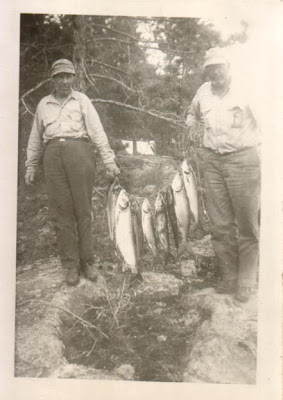 Later, log cabins were constructed with metal stack chimneys to accommodate wood burning metal stoves.
Later, log cabins were constructed with metal stack chimneys to accommodate wood burning metal stoves.Today, chimneys are built on inside or outside walls of the cabin and are stone. The stone fireplace/chimney is a major architectural feature of the cabin, giving the cabin a rustic look which appeals to our emotions.
Many fireplaces/chimneys are built of native small, medium and large flat faced rock, mortared together. These stone chimneys are large and are great works of art establishing a strong sense of substance and scale. The stones are natural color, usually from river rock.
Other stone chimneys are cut to form small or medium size rectangular pieces giving an ashlar style look to the fireplace/chimney.
The stone of the fireplace/chimney is extended to the facing on the foundation walls, piers, retaining walls and, at times, to porch/patio details and plant edging. The stone gives unity to the architectural look of the cabin and landscaping.
A local stone supplier has an interesting variety of stone that is manufactured from natural ingredients; that is, lightweight aggregate, portland cement and iron oxide pigments. The stone is a cast element into many rock shapes. The backside is flat and the front side looks and feels like stone.
Thickness ranges from one inch to three inches, depending on the style of stone to be used. The stone is applied similar to a veneer to a sheathing, concrete or concrete masonry unit back up. The sheathing must be covered with a moisture barrier to protect the sheathing from any possible moisture that may get into the wood sheathing. The concrete or concrete masonry units need no moisture barrier.
A mortar scratch coat is applied over metal lath when sheathing is used as a backup. The mortar scratch coat is applied directly to the concrete or concrete masonry units when they are used as a backup. The veneer stone is then applied directly to the mortar scratch coat using mortar joints between the individual stone pieces.
The types of stone facing are varied, from uncoursed fieldstone (rough or ordinary), coursed rubble, squared-stone masonry, random ashlar (interrupted coursing) or range ashlar (coursed). The look and feel of natural stone are best color- blended together during installation to achieve the desired results.
A beautiful stone fireplace establishes a strong sense of substance and scale for the cabin.

 The best approach to using logs in constructing a log cabin or home is to use the expertise of any experienced log home builder. An alternative would be to obtain the expertise of a licensed Structural Engineer.
The best approach to using logs in constructing a log cabin or home is to use the expertise of any experienced log home builder. An alternative would be to obtain the expertise of a licensed Structural Engineer.




